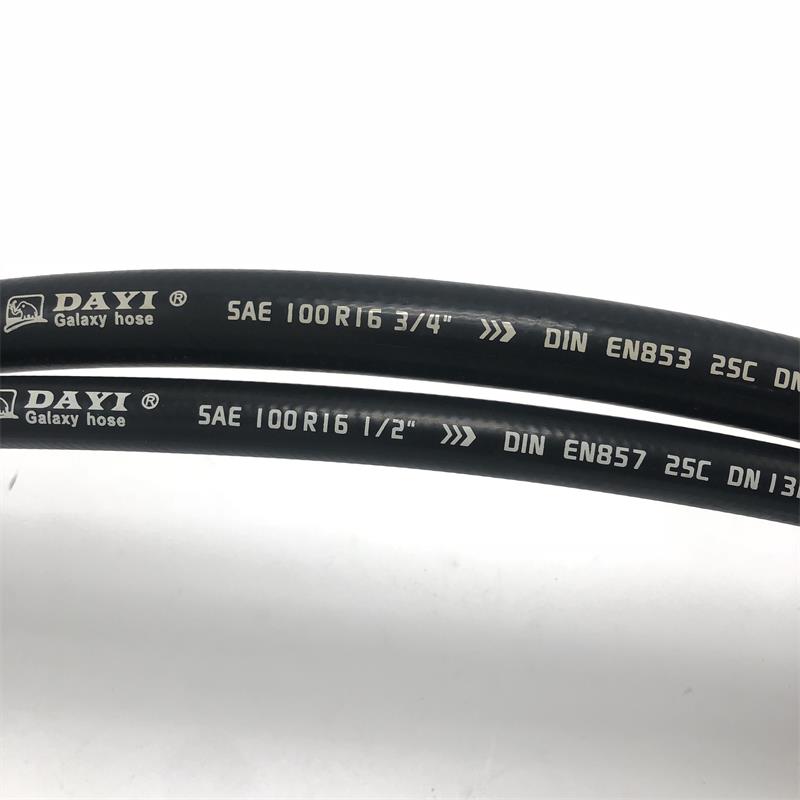335345435
Nov . 03, 2024 03:33 Back to list
lpg rubber hose
Understanding LPG Rubber Hoses Essential Components for Safe Gas Transfer
LPG (liquefied petroleum gas) rubber hoses play a crucial role in the safe and efficient transfer of gas in various applications, including residential, commercial, and industrial settings. These hoses are designed specifically to withstand the demands of transporting LPG, ensuring that gas is delivered safely and effectively to its intended destination.
Composition and Design
LPG rubber hoses are typically made from synthetic rubber compounds that are resistant to both the high pressures associated with LPG and the chemical properties of the gas itself. The external layer of the hose provides protection against environmental factors such as UV radiation, ozone, and abrasion, while the inner lining is specifically formulated to prevent permeation and leakage of gas.
Most LPG hoses are reinforced with high-strength materials such as textile fibers or steel wire, ensuring durability and flexibility. This construction allows the hoses to handle the varying pressures and temperatures often encountered in gas transport applications. The design also often includes standard fittings and connectors to facilitate seamless integration with other LPG equipment, such as regulators, burners, and tanks.
Safety Features
Safety is paramount when handling gases like LPG, which is highly flammable and can pose significant hazards if not managed properly. LPG rubber hoses are manufactured with safety features that adhere to strict industry standards. For instance, many hoses are equipped with burst-resistant capabilities, meaning they can tolerate high internal pressures without breaking, thus minimizing the risk of leaks.
Moreover, some hoses come with built-in indicators that signal wear or damage. These visual cues alert users to potential issues that could compromise safety, allowing for timely inspection and replacement. Users are advised to regularly check hoses for signs of wear and to replace them according to manufacturer guidelines to ensure ongoing safety.
lpg rubber hose

Applications of LPG Rubber Hoses
LPG rubber hoses are versatile and can be employed in a wide array of applications. In residential settings, they are commonly used for gas grills, ovens, and heating equipment. In commercial contexts, LPG hoses facilitate the operation of kitchen equipment in restaurants, catering services, and food processing facilities.
Industrial applications also benefit from LPG rubber hoses, particularly in sectors such as manufacturing and agriculture. These hoses are utilized in processes that include powering machinery, generating heat, and providing fuel for various operations.
Best Practices for Use and Maintenance
To maximize the lifespan and performance of LPG rubber hoses, it is essential to follow best practices during installation and use. Hoses should be installed in a manner that avoids sharp bends, pinch points, or extreme temperatures. Regular visual inspections can help identify early signs of wear or damage, enabling users to take corrective action before problems escalate.
Additionally, hoses should be cleaned periodically to remove contaminants that could cause degradation. Proper storage is also critical; hoses should be coiled and stored in a cool, dry place, away from direct sunlight and moisture.
Conclusion
In conclusion, LPG rubber hoses are vital components in the safe and efficient transfer of liquefied petroleum gas. By understanding their construction, safety features, applications, and maintenance requirements, users can ensure reliable performance while upholding safety standards. Investing in high-quality LPG rubber hoses and adhering to best practices will ultimately lead to safer operations and greater efficiency in gas applications.
-
SAE 100 R17 Black Smooth Cover Hydraulic Hose
NewsMar.07,2025
-
SAE 100 R17 Black Smooth Cover Hydraulic Hose
NewsMar.07,2025
-
SAE 100 R17 Black Smooth Cover Hydraulic Hose
NewsMar.07,2025
-
SAE 100 R17 Black Smooth Cover Hydraulic Hose
NewsMar.07,2025
-
SAE 100 R17 Black Smooth Cover Hydraulic Hose
NewsMar.07,2025
-
steel wire braided hydraulic hose
NewsMar.07,2025



